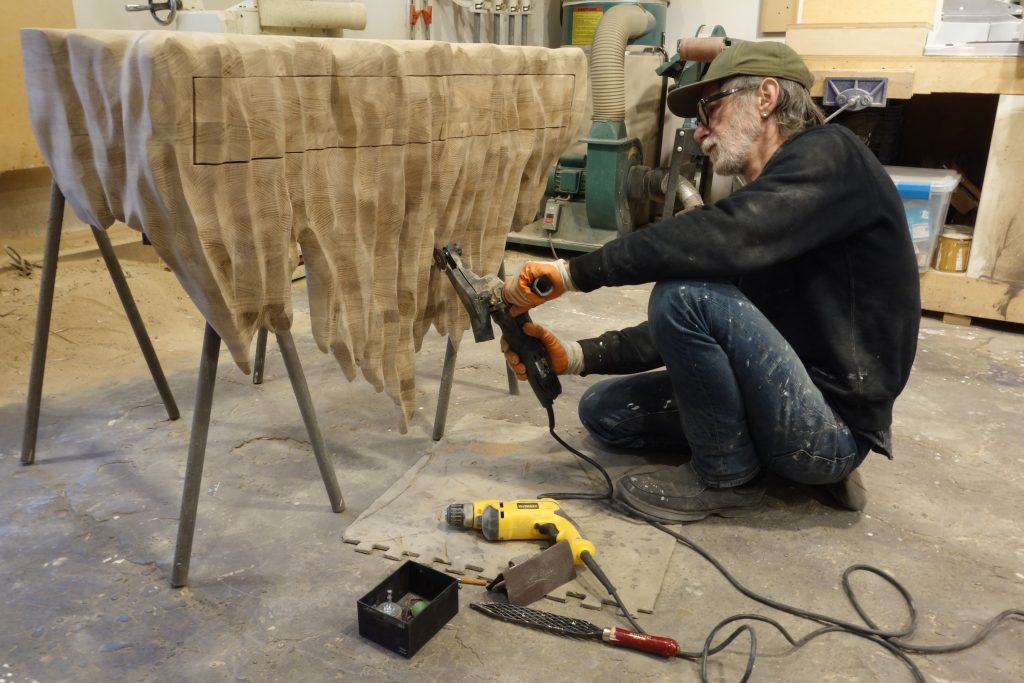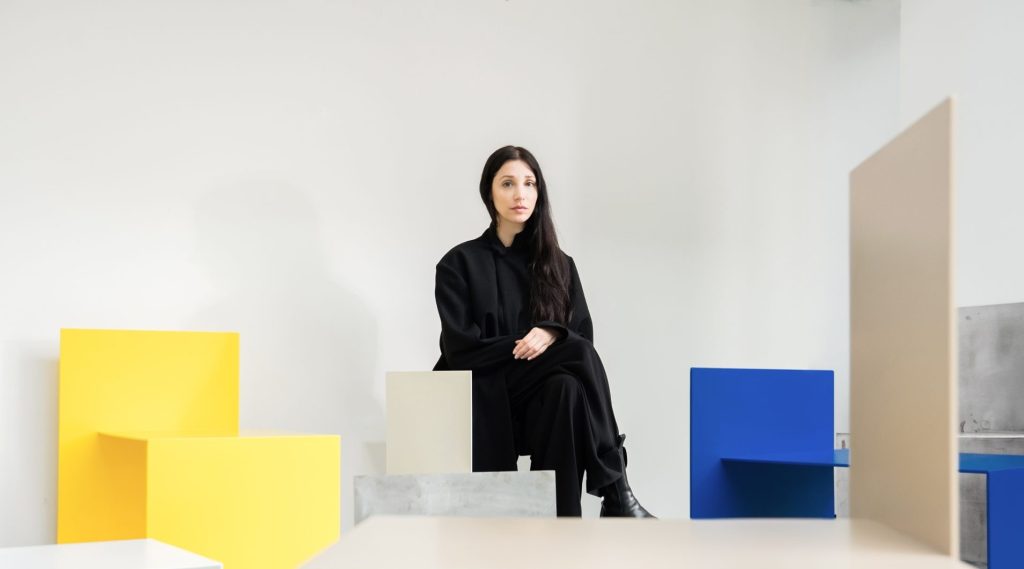
Adorno Profiles: Katrín Ólína Pétursdóttir
“Dream, collaborate, experiment and make with awareness.”
– Katrín Ólína Pétursdóttir
Adorno is proud to present Adorno Profiles, a series of interviews and editorials focused on showcasing a more personal and intimate view into the stories and backgrounds of both prominent and up-and-coming creatives in the design world.
In continuation with the ongoing Now Nordic investigation into the importance and relevance of Nordic Design in an increasingly globalised world, leading voices from each of the 5 Nordic Design scenes will be interviewed to give us their perspective on being a part of the Nordic Design Scene, long seen as the design world’s “prodigal son”. Our first installment features Icelandic designer and artist, Katrín Ólína; her story as one of the most innovative and incredibly cross-disciplinary minds to come out of Iceland’s young but rapidly growing design scene.
Ólína is a creative who is truly unbound by categorisation. Her practice spans the worlds of industrial design, graphic arts, technology, even anthropology and geology. This devotion to learning and experimentation has garnered her numerous awards as well as a visiting researcher position at Aalto Digital Design Laboratory in Helsinki. Although born in Iceland, her studio follows the same versatile philosophy as her practice, having been based in multiple cities around the world. Such a dynamic range of influences gives Katrín Ólína a particularly insightful point of view into the current state of Icelandic and Nordic Design.
Nordic Silence (2018) is a series of furniture in cork and wood designed for Finnish furniture company, Made by Choice inspired by the roaring silence that describes the wilderness of the Nordics and the silence within that is found through yoga. More info can be found at http://adorno.design/members/katrinolina/
BACKGROUND
Where did you grow up?
Akureyri, Iceland
Did you grow up in a “creative” household?
Yes, very much so. Making things and playing music was a part of everyday life.
What does your family think of your work?
They have always been very supportive.
Do you have any strong memories of design from your childhood?
I mostly remember beautiful books and toys. One of my first memories is of a wooden cut out clown in polka dots and a rolling Humpty Dumpty. There was also some Danish furniture around, including J16 Rocking Chair by Hans Wegner. It was a good vehicle for transportation to some imaginary places.
At what age did you get started working with art or design?
I was always drawing and making things as a kid. I started making my own clothes as a teenager. I never followed a pattern, always just made things up. The results were simple and a little bit charming pieces of clothing.
Was there a defining moment that made you interested in working as an artist?
Not really. It happened when I was studying Design.
Exerpts from Primativa (2014-ongoing): developed by Ólína at the Aalto Digital Design Laboratory, presenting the development of a design language with one basic shape more info can be found at http://www.primitiva.fi/
YOUR PRACTICE
How much time do you spend in your studio every week?
My studio is nomadic. For a few years I’ve been exploring a way of working and living creatively, something that works well for me. I’ve adopted a structure that is small and flexible and fits my projects. Needless to say, I spend most of my time working. I’ve been based in London this past one and a half year and now I find myself back in Iceland, to develop a project locally.
What does your studio look like at the moment?
These days, my nomadic lab finds itself in the West of Iceland in a ceramicist workshop. I am researching the properties of Icelandic clay from a specific area and have teamed up with a knowledgeable ceramicists to develop the research into a project and a possible production of products.
What are your main sources for inspiration?
Nature and Thinking.
Are there any activities you need to do to increase your creativity?
Read. Walking has become a big part of my everyday life. Podcasts and audiobooks on the go are great. Last year, I covered 3000 km walking.
How has your relation to materials and mediums changed over time?
Digital artwork and illustration were a big part of my portfolio for many years. The more environmentally aware I become, more I feel the urge to explore materials, as if in need to honour nature and the material world.
What are the main words that you would want to hear people using to describe your work?
I don’t really know, but if my projects carry some poetry and archetypal qualities across, then I think the work is doing its work.
What do you think your work will look like 10 years down the road?
Hopefully my ideas will have materialised further into a coherent body of work.
Wilderness (2017) is a conceptual bas relief that Ólína developed in collaboration with Finnish furniture company, Choice, based on a bird’s eye view of Finland’s “land of a thousand lakes”.
ICELAND
Tell us about a local Icelandic design or craft tradition that someone who hasn’t visited your country before should really know about.
3D Product Design is a new discipline in Iceland. It’s only been a part of the education system since 2000. Before that time, people interested in this field went abroad to study.
Do you incorporate any Icelandic materials into your work?
At the moment I’m working with Icelandic clay. It is quite a different material from clay elsewhere because of its volcanic nature. It is a difficult material to work with, but that challenge is a part of my project.
What is inspiring (or uninspiring) about the design scene in Iceland?
How experimental it is, is inspiring.
Do you take inspiration from the natural landscape of Iceland?
Yes very much so. Perhaps nature is to us Icelanders what temples and architecture landmarks are to other cultures.
Do you have a local spot in Iceland that you visit for inspiration?
Not specifically.
What opportunities or disadvantages has Iceland’s design scene brought you?
I worked abroad for many years, where design was driven as a service to companies. Iceland has never been a place for mass production in the lifestyle business because we lack the material resources, and we are too far from the markets. The world has changed dramatically in recent years and this makes design entrepreneurship more realistic. I am glad when I see product design becoming increasingly socially and environmentally aware and inventive as well. The way design is heading now, was quite unthinkable some 15 years ago.
Do you see any recent developments in your country’s design scene that will be important to follow?
I think that material innovation is becoming quite interesting.
What advice would you give to young Icelandic designers?
Dream, collaborate, experiment and make with awareness.
Minerals (2017) is a a series of rugs hand-tufted in India for Kateha, Sweden, focusing under Earth’s surface to celebrate the beauty of microscopic patterns in the mineral kingdom.
NORDIC DESIGN CULTURE
Is there a such a thing as Nordic Design?
You can say that.
How important is incorporating your culture or Nordic identity into your work?
I never think about working with a special style. Rather, I would hope that my projects develop their own identity through the process.
Is the label of Nordic design beneficial to your work or can it hold you back?
It doesn’t really affect me.
Do designers have a duty to represent tradition and their local culture in an evermore globalising world?
If something is deeply individual and honest, it reflects both the local and the global.
What does the future of Nordic design look like?
Hopefully aware, creative and relevant.
Is there a non-Nordic design community that you find particularly interesting or inspiring?
Anything that reflects where we are as a humanity, is inspiring. This type of work can come from anywhere.
Straight from the artist’s album:
Photos of her most recent project in west of Iceland
Find out more about the artist:
http://adorno.design/members/katrinolina/
https://katrinolina.com/
https://www.instagram.com/katrinolina/
























